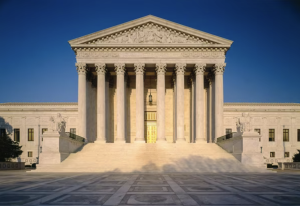
Anonymous photographer: US Supreme Court
In light of yesterday’s decision by the supreme court in favour of Lynn Goldsmith, I wonder if there is a special hot place in the underworld for those so-called artists, who will now face an onslaught of lawsuits.
Lawsuits, which until yesterday’s US Supreme Court ruling were an uphill battle with limited chance of success. Lawsuits that are now very winnable and should finally drive a stake through the heart of those that appropriate photographs to remake them, silkscreen them, or make other two dimensional copies.
In case you have been living under a rock, the ruling everyone had been waiting for fell yesterday in the case between the Andy Warhol Foundation and the photographer Lynn Goldsmith over the use of a Goldsmith photograph of the artist Prince (see my blog: Ending Appropriation of Photographs by So-Called Artists).
The US Supreme Court ruling was 7-2 in favour of Goldsmith, with Justice Sonia Sotomayor writing in the majority opinion: “Goldsmith’s original works, like those of other photographers, are entitled to copyright protection, even against famous artists…”
Where does this leave Richard Prince and so many others who have no original ideas and simply change the scale, or rephotograph other photographer’s work? Do they file for Chapter 11 protection as a business (assuming a lot of these photographers have protected themselves behind some corporate structure), or do they declare personal bankruptcy in order to avoid the courts, legal fees and the now almost inevitable damages to be paid.
Does Gagosian drop Richard Prince as an ‘artist’. Do other galleries do the same for those that for too long have lived off the work of others? Does this ruling make the art gallery complicit? Considering yesterday’s ruling, art galleries can surely no longer pretend that they didn’t know, when they decide to represent a particular copy-cat artist.
And perhaps more interesting, given that collectors are fickle beings; will the market now finally speak and make the work of copy-cats unacceptable, or better yet unsellable? Could it be that to hang Richard Prince’s cowboys, or an oversized Instagram image on your wall and talk about your art collector sophistication becomes so gauche that the monied collectors finally take their losses and turn their backs on appropriation and theft. Is it time to send the copy-works to auction – if the auction houses will touch them – and take the inevitable financial bath?
I look forward to a few years from now walking into a non-descript local museum and finding a poorly lit, somewhat hidden picture, with a small cardboard tag that reads: “Here hangs a work by so-and-so, who used to be a somebody, but now is a nobody. Felled by the courts and art collectors for being no more than a copy-cat”.
It is a great day for Lynn Goldsmith, Donald Graham, Eric McNatt, Norm Clasen, Jim Krantz, and so many others, who have had their work stolen and abused with neither credit, nor compensation given.
Harbel


